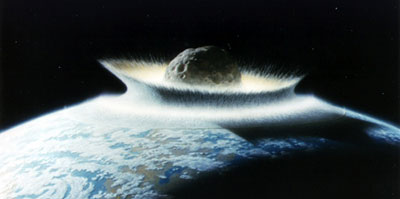Asteroid turns hot potato: when NEO risk communication becomes uncommunicativeby Benny Peiser
|
| In recent years, the public has become so used to environmental doomsday predictions and eco-alarmism that the latest virtual impact alert, happily, didn’t produce much of a hullabaloo. |
Yet, instead of any answers, the data has been completely ignored by impact risk assessors. As a matter of fact, the latest updates by the JPL and NEODyS risk pages have simply excluded the 2002 “precovery” observations from their risk analysis. As the web site Asteroid/Comet Connection noted on 13 March: “This, like the NEODyS March 11th revision, is a revised risk assessment based on observations reported through March 10th. It does not include the tenuous precovery positions reported since then from early 2002.”
So why are the risk assessors suddenly conspicuously uncommunicative? If they don’t like the 2002 observations, why don’t they say so? If the inclusion of the new data increases or decreases or simply eliminates the impact probability in 2102, why don’t they say so?
The real problem, as Brian Marsden points out below, is most likely to be that the 2002 images are extremely weak. The problem comes back to how one chooses to weight such observations. Even in good situations, with clear and confirmed images, there is always going to be some subjectivity, which is bound to affect the computed impact probability, random number that it indeed is.
Regrettably, the entirely pointless discretion has created an unhealthy air of secrecy about the whole thing. In the case of 2004 VD17, we know that there is absolutely no problem about getting future data. There is also plenty of time. As I have said from the start, it is almost certain that the impact possibility will go away, sooner or later. So why this silence?
In the meantime, with nobody saying anything except that the Torino Scale value is two (and arguing about what this means, when it actually means nothing relevant at all), I fear that some NEO risk assessors have tied themselves into a knot.
Thankfully, Brian Marsden has shed some light on these problems in his contribution further below. He also presents some new thoughts on the “Purgatorio Ratio”, an alternative NEO risk communication tool that aims to radically change the way information about asteroids with non-zero impact probabilities is assessed, organized, and communicated. I hope that the mess over 2004 VD17 will convince more members of the NEO community that the current risk communication system isn’t working properly and thus in urgent need of modification and improvement.
